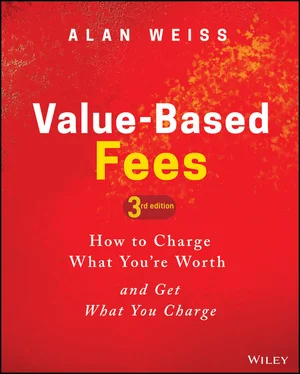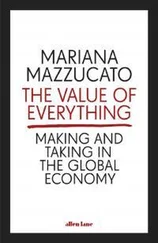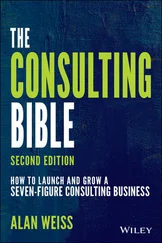WHY YOUR PRESENCE ISN'T REQUIRED
The concept of value is not, therefore, vested in your physical presence, physical work, or even being in view. Value is a function of the worth I place on a product, service, or relationship. Value may be, like beauty, in the eye of the beholder—a season ticket to a 49ers game might thrill one person but cause someone else to say, “Is that on Xbox?” or “What's a 49er?” 3
Value can be tangible:
Increased income
Larger market share
More referrals
Lower cost of new client acquisition
Value can be intangible:
Improved aesthetics
A feeling of security
Greater safety
More freedom
Some value is society- or community-related, creating normative pressures to appreciate it:
Better roads
Faster internet
More access to quality health care
Better schools
Some is intensely personal:
More intimacy with my partner
Better cooking skills
Ability to speak a second language fluently
More respect from colleagues
Value pertains to the importance of something, and is measured in worth, often expressed in equitable compensation. Given the diverse factors noted above, some people see value as a bargain (“I purchased this fine wine for 25 percent below retail prices”) and some as justification for major investment (“The painting is worth $5 million on the market at the moment”). What is the worth of a great vacation or entertainment experience. Those with a scarcity mentality might buy cut-rate tickets to the theater and tolerate obstructed views, while those with an abundance mentality might pay 200 percent of face value to secure house seats.
But note that these are all experiences of one kind or another. A personal guide in Pompeii has to be with you if you're on a walking tour, and is much more valuable than an audio guide as you wander around. (You can't ask questions of an audio guide.) However, the person selling you the house seats needn't accompany you to the theater or even talk to you; it can all be done on the computer.
Alanism: Charging by the hour or any other time unit for professional services isn’t merely amateurish, it’s unethical.
Whether we are present (e.g., interviewing people and holding focus groups at a client's site) or not (e.g., advising by e-mail, phone, or Zoom), our value is in the results of our project and advice, not in terms of whether we are present or not, in reality or virtually. This book is of value to you, but I'm not reading it to you and you're not paying by the page.
Our clients are best served by quick, accurate resolutions to their issues. But if we charge by the day, for example, we make the most money by staying as long as we can. That is an ethical conflict. Moreover, the client shouldn't have to make an investment decision each time the client feels we may be needed. And our presence is often disruptive, distracting, and costs still more because of travel and lodging needs.
Many professional services began charging by the hour (lawyers still tend to bill in six-minute increments) and have never changed: accounts, designers, attorneys, architects, consultants, coaches, and so forth. However, the smarter ones evolved to understand the concept of their value, not merely their time. What is the value of legal services for a successful acquisition, or an amicable divorce? How valuable are accounting services that proactively can reduce your taxes or arrange for interest-free loans under certain circumstances?
CASE STUDY: THE ARCHITECTS
The American Institute of Architects (AIA) was a client for a couple of years. Their members habitually charged by the hour for designing blueprints, finalizing plans, overseeing work, and so forth.
During a decade of increased salaries for almost every professional service in America, the architects suffered a net decline in income. How much is more light, a better family environment, and better use of space worth? Apparent, less than $100 an hour.
According to Salary.com , the average hourly fee of an architect in the U.S. in 2020 is $27. That is not a typo .
Value-based fees is a philosophy that holds that we provide a dramatic return on the client's investment through our projects and advisory services, in return for equitable income . That's why a peer-level, trusting relationship is required with our buyers, which we'll talk extensively about as we progress. That's how partners treat each other.
Capitalism is based on my providing you with products or services of a certain quality in a certain manner at a certain time, in return for which you will provide me with certain fees in a certain manner at a certain time. If you haven't looked around lately at communism or socialism, let me assure you that capitalism has won.
Let's proceed to help you and your clients win together by intelligently assessing value and commensurate fees.
THE IMPORTANCE OF BUYER COMMITMENT, NOT COMPLIANCE
I can prove anything on a double-axis chart, 4 but the matrix in Figure 1.2happens to hold true. As you can see in the figure, the ideal relationship occurs when buyer commitment to the project (and to you) is high and your fee is high. If buyer commitment is high and your fee is low, you are wasting an opportunity. If buyer commitment is low and your fee is low, you will, at best, create an indifferent sale. And when fees are high but commitment is low, you will be shown the door.
My estimate is that most consultants' approaches (whether or not they actually get the business) are in the bottom left quadrant about 25 percent of the time, in the bottom right quadrant about 10 percent of the time, in the upper left quadrant about 60 percent of the time, and in the upper right quadrant only about 5 percent of the time!
That's right: most consultants, including most of you reading this, habitually undercharge for your services and deliver far more than you are receiving in remuneration, considering your contribution to success. You are undercharging and over-delivering, and lest you consider that an exalted position, consider trying to pay your mortgage or 401k contribution with that combination.

Figure 1.2 The Relationships Between Fees and Buyer Commitment
Most buyers comply . That is, they are willing to go along with the “expert,” even if it's sometimes against their better judgment. Or they will delegate you to someone they believe has the technical ability to evaluate your proposition, typically in the human resource department, finance, or legal. (Put these together, and they are an anagram for “no business here.”) Buyers who merely comply may be seen at first blush as easy to work with, but they are actually land mines waiting for some weight to trigger them. That's because they hold the consultant responsible for everything. They believe that you are doing something to them or for them or at them, but certainly not with them.
Compliance is dangerous because the buyer usually takes no inherent responsibility for the project but rather abdicates to the consultant. I've never found a project that a consultant can unilaterally implement successfully, since consultants have responsibility but no real authority . (When that dynamic is reversed, it's the sign of a very poor implementation scheme.)
Consulting projects should be true partnerships between the consultant and the economic buyer. This begins prior to the proposal being signed and is an integral aspect of obtaining high fees. A merely compliant buyer will grudgingly or apathetically go along with the implementation but will do so at the lowest possible fee. The head is involved but not the gut (remember: logic makes people think, but emotion makes them act). Large fees are dependent on emotional buy-in, and that must be achieved in the relationship aspect of the consulting sequence, well prior to the actual closing of business.
Читать дальше













